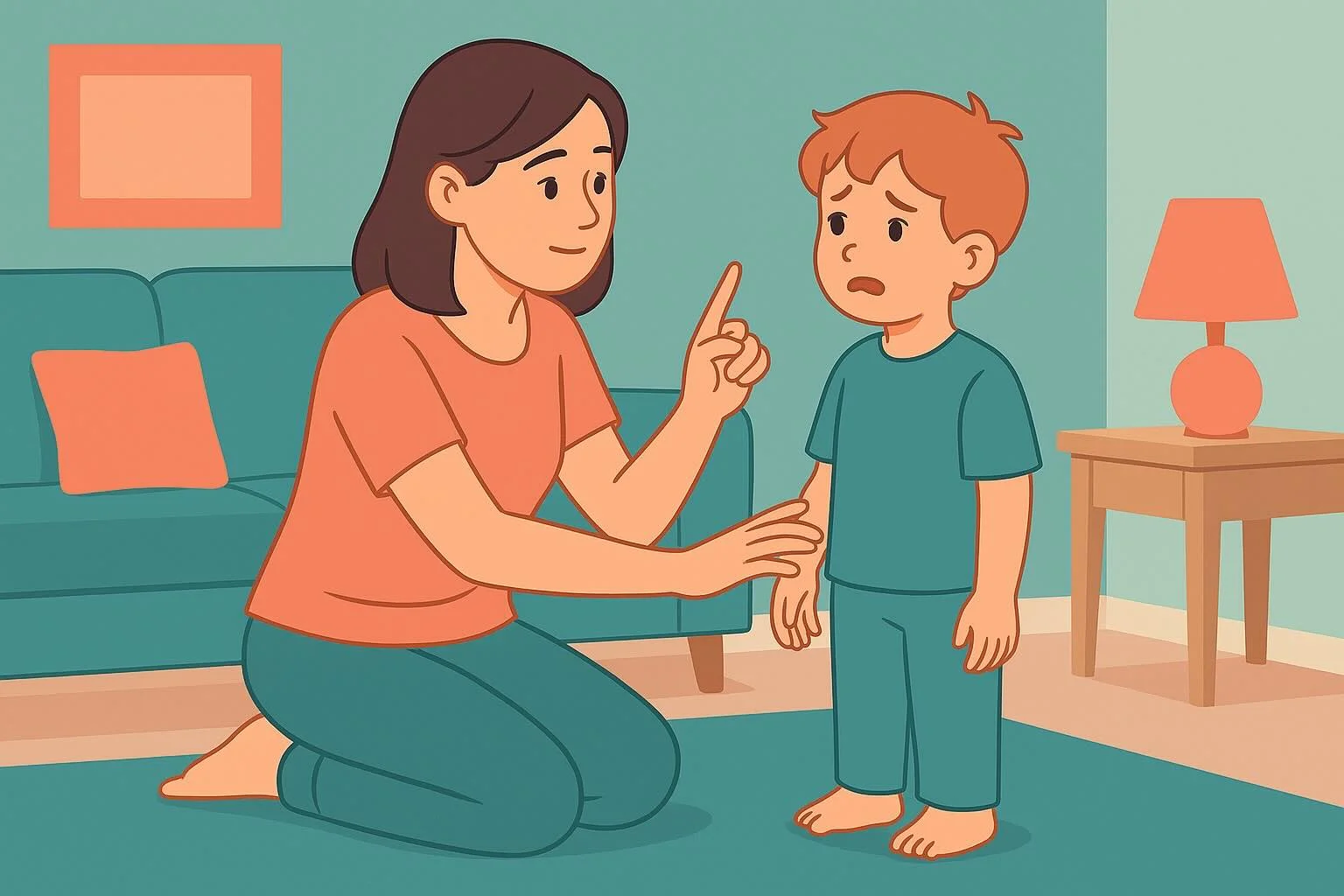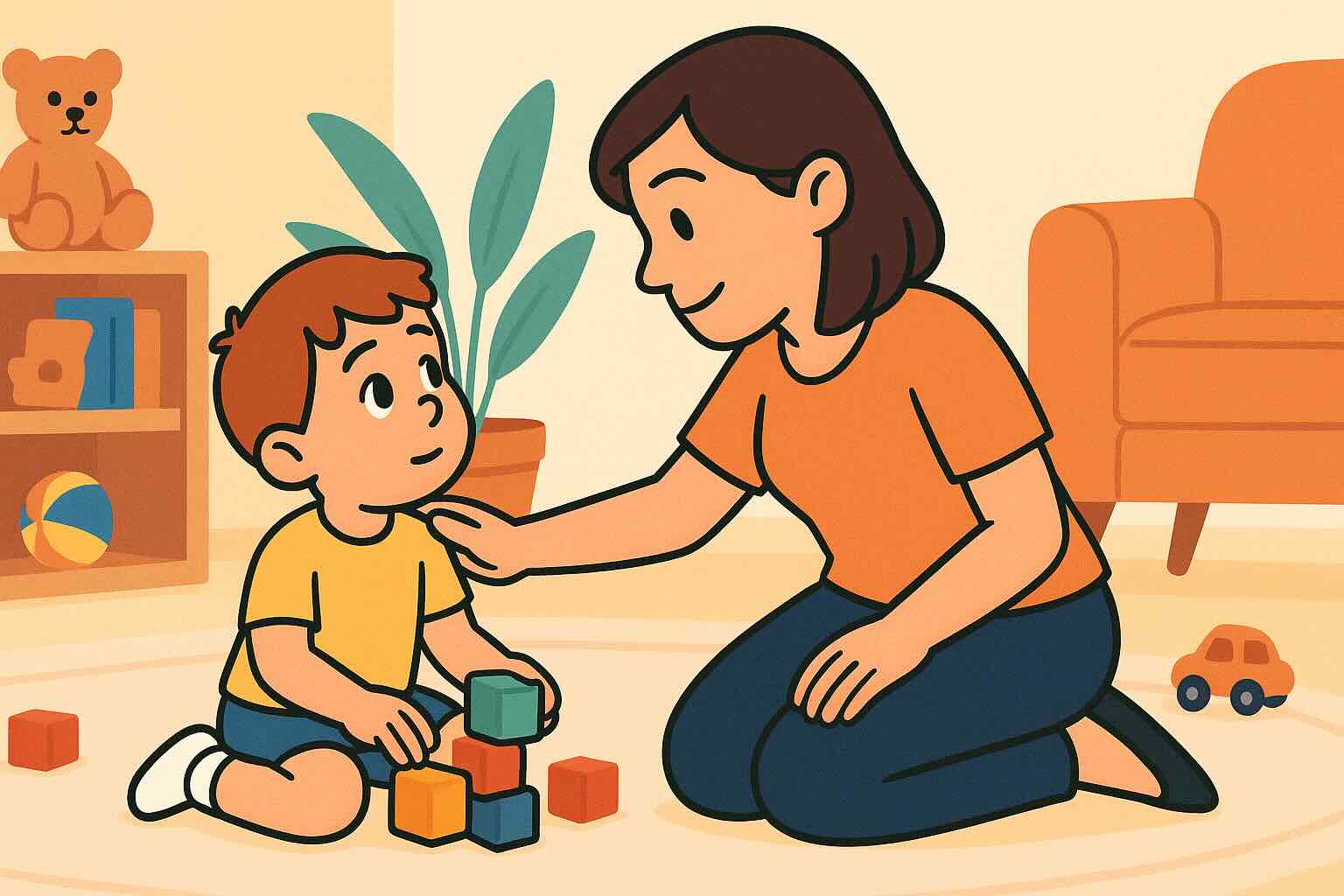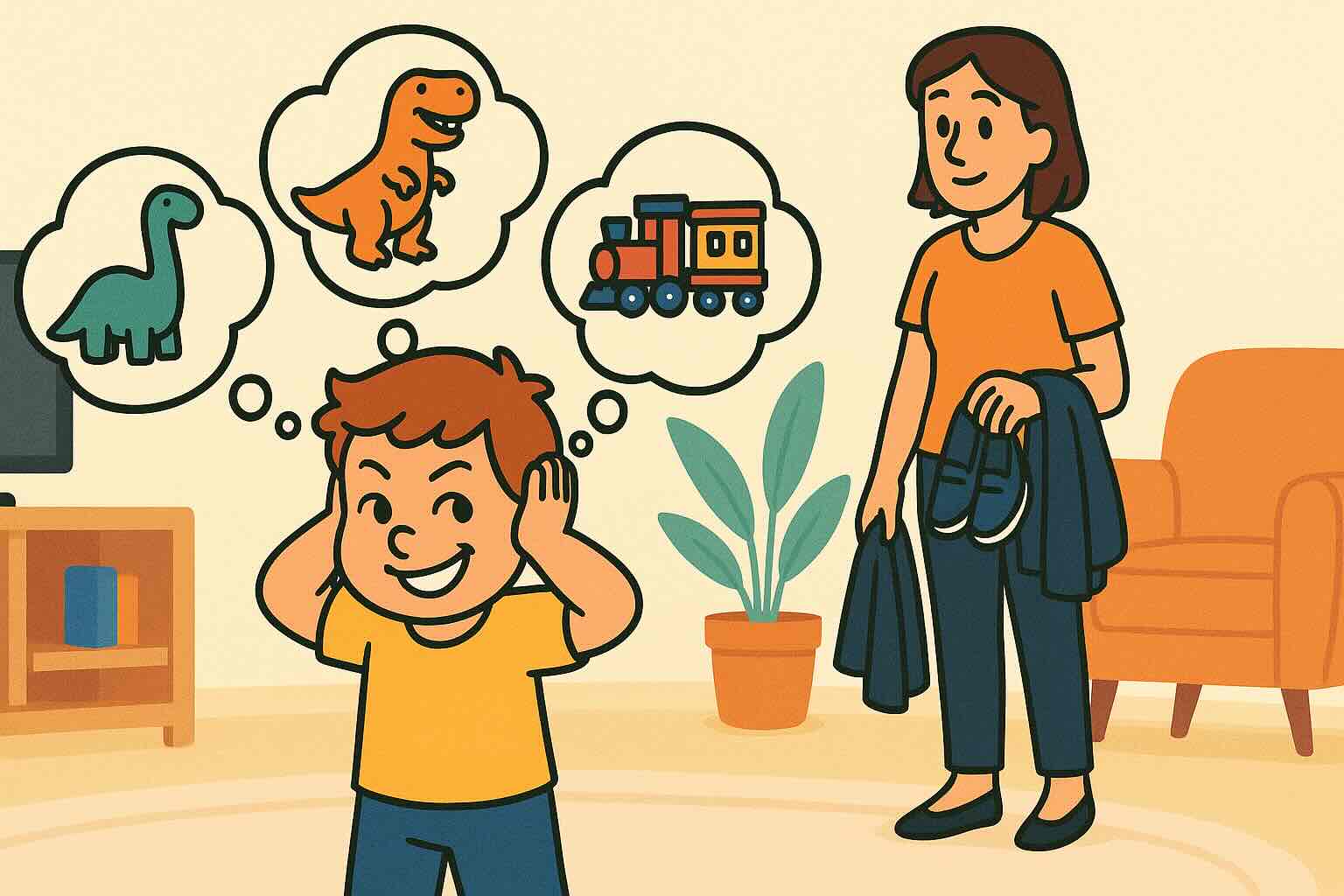Positive Discipline Examples for 3-Year-Olds

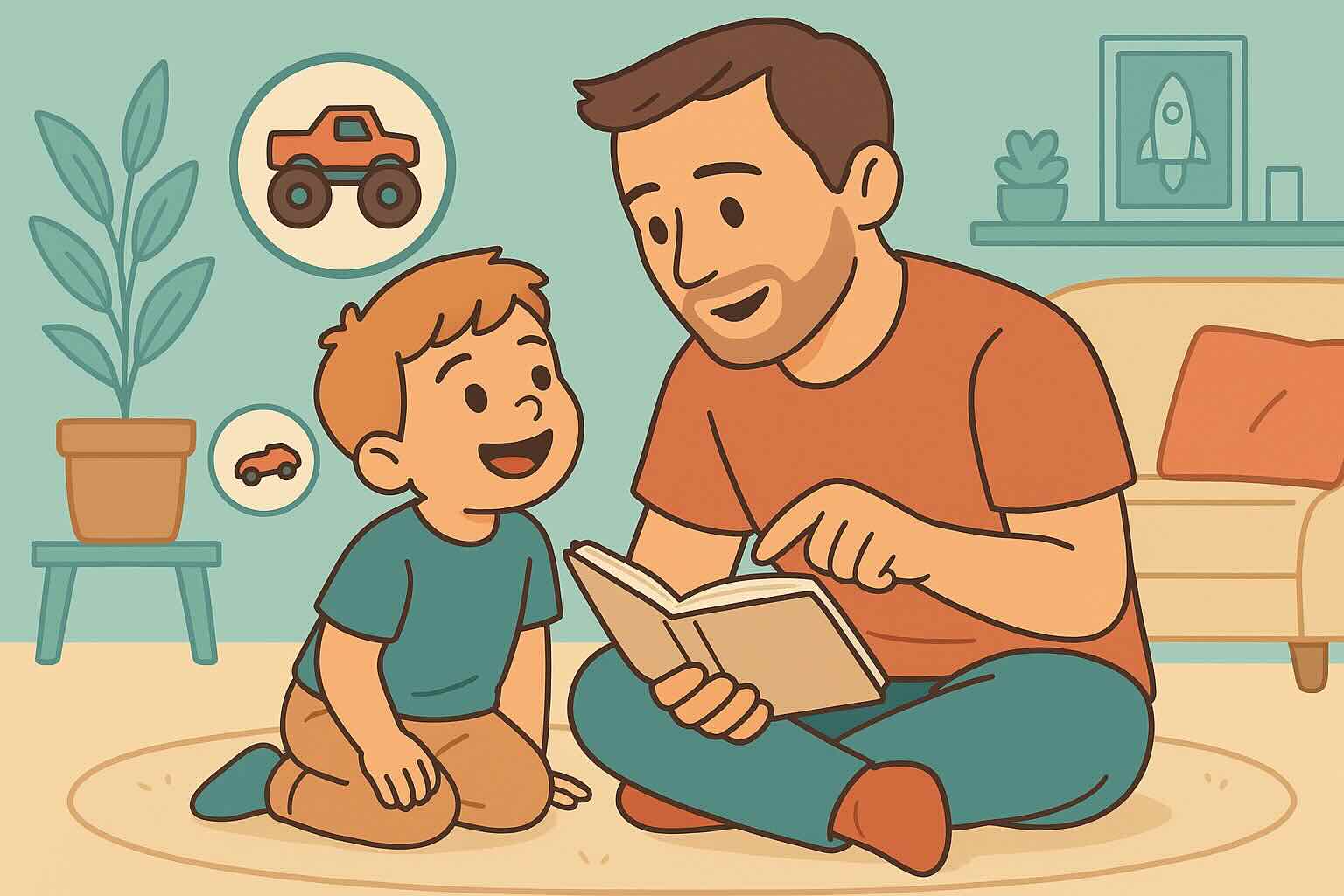
Your 3-year-old melts down in the grocery store because you won't buy the cereal with cartoon characters. Your instinct might be to threaten a timeout, remove privileges, or give in to stop the scene. But what if there's a more effective approach that actually teaches emotional regulation while strengthening your relationship?
Positive discipline for 3-year-olds works with their developmental reality instead of against it. At three, children are just beginning to develop impulse control, emotional regulation, and language skills. Their brains are wired for connection and learning, not compliance through fear. When we use punishment-based approaches, we're fighting their natural development rather than supporting it.
This comprehensive guide provides real-world examples, word-for-word scripts, and practical strategies for common 3-year-old challenges. You'll learn how to guide behavior while building your child's emotional intelligence, problem-solving skills, and trust in your relationship. For foundational concepts, see our guides on connection before correction and natural consequences.
What You'll Learn in This Guide
- Understanding Your 3-Year-Old's Brain - Why traditional discipline fails at this age
- The Connection-First Approach - How relationships drive cooperation
- Real-Life Scenario Examples - Specific situations with detailed responses
- Age-Appropriate Natural Consequences - When and how to let life teach
- Emotional Regulation Support - Helping big feelings without punishment
- Daily Routine Challenges - Morning, bedtime, and transition strategies
- Social Situations and Sibling Issues - Navigating relationships with guidance
- Building Internal Motivation - Moving from compliance to character
Estimated reading time: 15 minutes
Understanding Your 3-Year-Old's Developing Brain
Why Traditional Discipline Backfires
The 3-year-old brain reality:
- Prefrontal cortex is immature - They can't "think through" consequences like adults
- Emotional brain dominates - Feelings override thinking during stress
- Memory is developing - They may genuinely forget rules repeatedly
- Language is limited - They can't always express needs appropriately
- Impulse control is minimal - They act on immediate desires
What this means for discipline:
- Timeouts isolate them when they most need connection
- Threats and consequences don't motivate behavior change
- Punishment increases stress hormones, making learning harder
- They need co-regulation, not isolation, to calm down
- Teaching moments work better during calm times
The Science of Connection-Based Discipline
When 3-year-olds feel connected and safe:
- Stress hormones decrease (cortisol, adrenaline)
- Learning centers of the brain activate
- They're naturally motivated to please trusted adults
- Their best self emerges more frequently
- They develop better emotional regulation over time
Research shows:
- Children cooperate 85% more with adults they feel connected to
- Secure attachment reduces behavior problems by 60%
- Connection-based discipline builds stronger character long-term
- Punishment-based approaches often increase aggression and defiance
Core Principles of Positive Discipline for 3-Year-Olds
Principle 1: Connection Before Correction
Always address the relationship before addressing the behavior.
Traditional approach: "Stop that right now! You're being naughty!" Positive discipline: "You're having big feelings. Let me help you."
Principle 2: See Behind the Behavior
Every challenging behavior meets a need or communicates something important.
Traditional approach: Focus only on stopping unwanted behavior Positive discipline: Ask "What is my child trying to tell me or get?"
Principle 3: Teach During Calm Moments
Big learning happens when emotions are regulated, not during crises.
Traditional approach: Lecture and consequence during meltdowns Positive discipline: Comfort during crisis, teach during calm
Principle 4: Natural Learning Over Artificial Consequences
Let life teach the lessons when safe and appropriate.
Traditional approach: "If you don't eat dinner, no dessert" Positive discipline: Natural hunger teaches about meal importance
Real-Life Positive Discipline Examples by Situation
Scenario 1: Grocery Store Meltdown
The Situation: Your 3-year-old sees their favorite cereal, you say no, and they collapse in tears, screaming and kicking in the cereal aisle.
Traditional Response: "Stop that right now! You're embarrassing me! If you don't stop crying, we're leaving and you're going to timeout when we get home!"
Positive Discipline Response:
Step 1 - Acknowledge and Connect Get down to their level "Oh sweetie, you really, really wanted that cereal. You're so disappointed."
Step 2 - Validate Without Changing the Boundary "It's hard when we can't have something we want. I understand you're upset, and we're still not buying the cereal today."
Step 3 - Offer Emotional Support "Would you like a hug while you have these big feelings? I'm right here with you."
Step 4 - Redirect When Calm "When you're ready, you can help me find the bananas. I need someone good at spotting yellow!"
Why This Works:
- Validates their emotional experience
- Maintains the boundary without punishment
- Teaches emotional regulation through co-regulation
- Preserves dignity for both parent and child
- Models how to handle disappointment
Scenario 2: Hitting When Frustrated
The Situation: Your 3-year-old gets frustrated building blocks and hits you when you try to help.
Traditional Response: "We don't hit! That's not okay! Go to timeout right now!"
Positive Discipline Response:
Step 1 - Stop the Behavior Gently But Firmly Hold their hands gently "I can't let you hit me. I can see you're really frustrated."
Step 2 - Name the Big Feeling "Your tower fell down and you worked so hard on it. That's really frustrating!"
Step 3 - Teach Alternative Expression "When you're mad, you can stomp your feet like this, or squeeze this pillow really tight, or say 'I'm MAD!'"
Step 4 - Problem-Solve Together "Let's look at your blocks. What happened to your tower? Should we try building it differently?"
Step 5 - Reconnect "I love you even when you have big mad feelings. Next time you're frustrated, call me and I'll help."
Why This Works:
- Stops harmful behavior without shame
- Teaches vocabulary for emotions
- Provides alternative outlets for anger
- Maintains connection during difficult moment
- Builds problem-solving skills
Scenario 3: Bedtime Resistance
The Situation: Every night becomes a battle - your 3-year-old refuses to brush teeth, won't put on pajamas, and finds endless excuses to avoid bed.
Traditional Response: "If you don't get ready for bed right now, no stories tomorrow night!"
Positive Discipline Response:
Step 1 - Acknowledge Their Perspective "You don't want bedtime to happen. You wish you could keep playing!"
Step 2 - Create Connection Around the Routine "I love our time together too. Bedtime means we get special snuggle time and stories just for us."
Step 3 - Offer Choices Within the Structure "What should we do first - brush teeth or put on pajamas? You choose!"
Step 4 - Make It Special, Not Punishment "I can't wait to hear what story you pick tonight. Should we read on your bed or mine?"
Step 5 - Stay Present During Resistance "You're telling me 'no' to bedtime. I hear you, and it's still time to get ready. I'll help you."
Why This Works:
- Validates their preference without changing expectation
- Creates positive association with bedtime routine
- Offers autonomy within necessary structure
- Uses connection as motivation rather than threats
- Supports them through the transition
Scenario 4: Refusing to Clean Up Toys
The Situation: Toy cleanup becomes a daily power struggle with your 3-year-old running away, ignoring requests, or having a meltdown.
Traditional Response: "I've asked you three times! If you don't clean up right now, I'm throwing all these toys away!"
Positive Discipline Response:
Step 1 - Get Close and Connect Sit down near them "I see you're having fun with your toys. It's hard to stop playing when you're in the middle of something good."
Step 2 - State the Expectation with Empathy
"And it's time to clean up for dinner. I know you don't want to, and we're doing it together."
Step 3 - Make It Collaborative "Should we clean up fast like race cars, or slow like elephants? You pick!"
Step 4 - Work Alongside Them "I'll put the blocks in this bin while you put the cars in that one. Teamwork!"
Step 5 - Acknowledge Their Cooperation "Look at you putting those cars away! You're being such a good helper."
Natural Consequence Option: If they absolutely refuse: "Toys that don't get put away need to rest until tomorrow. Which ones would you like to save by putting them away?"
Why This Works:
- Makes cleanup collaborative, not adversarial
- Offers choices within the expectation
- Uses natural consequences when needed
- Preserves relationship while maintaining boundary
- Teaches responsibility through partnership
Scenario 5: Sibling Conflicts and Sharing
The Situation: Your 3-year-old and older sibling fight over toys constantly, with hitting, grabbing, and screaming.
Traditional Response: "Who started it? [Child], you hit first, so you go to timeout!"
Positive Discipline Response:
Step 1 - Address Safety First "I see two upset children and some hitting. Everyone needs to be safe." Gently separate if needed
Step 2 - Acknowledge Both Children's Feelings "You both really want to play with that toy. That's frustrating when you both want the same thing."
Step 3 - Focus on Problem-Solving, Not Blame "We have one toy and two children who want it. Let's solve this problem together."
Step 4 - Guide Them Toward Solutions "What are some ideas for how both of you could have fun? Maybe taking turns, or finding another toy, or playing together?"
Step 5 - Support Their Choice "You decided to take turns and use the timer. That's great problem-solving!"
Follow-up Teaching (Later): "When you wanted the toy and your sister had it, what happened? Right, you hit. What else could you try next time?"
Why This Works:
- Treats both children as capable problem-solvers
- Teaches conflict resolution skills
- Doesn't reinforce tattling or victim/aggressor dynamics
- Builds empathy and consideration for others
- Prevents sibling rivalry patterns
Age-Appropriate Natural Consequences for 3-Year-Olds
When Natural Consequences Work Well
Immediate and Safe Learning Opportunities:
Clothing Choices:
- Situation: Refuses to wear coat on cold day
- Natural consequence: Feels cold outside
- Your response: "Brrr, you're shivering! That's what happens when we don't wear coats. What do you think would help?"
Food and Eating:
- Situation: Plays with food instead of eating
- Natural consequence: Feels hungry until next snack
- Your response: "Your tummy is rumbling. That happens when we don't eat our food. Lunch is in two hours."
Toy Care:
- Situation: Throws toys roughly
- Natural consequence: Toy breaks or becomes unsafe
- Your response: "Oh no, your car broke when you threw it. Thrown toys can break. Let's find a gentle way to play."
Sleep and Rest:
- Situation: Refuses nap, stays up late
- Natural consequence: Becomes overtired and cranky
- Your response: "You're having a hard time because you're so tired. Rest helps our bodies feel better."
When to Use Logical Consequences Instead
Create Learning When Natural Consequences Aren't Available:
Making Messes:
- Logical consequence: Help clean up the mess
- Script: "The paint spilled when you knocked over the cup. Let's clean it up together so our table is nice again."
Hurting Others:
- Logical consequence: Make amends and comfort
- Script: "Your friend is crying because you took their toy. What could help them feel better?"
Not Following Safety Rules:
- Logical consequence: Additional supervision or restriction
- Script: "Running in the street isn't safe. I need to hold your hand until you can remember to stay on the sidewalk."
Supporting Emotional Regulation Without Punishment
Understanding 3-Year-Old Big Feelings
Common emotional triggers:
- Transitions and changes in routine
- Being told "no" or having limits set
- Feeling misunderstood or unheard
- Physical discomfort (hunger, tiredness)
- Overwhelming sensory input
What NOT to do during meltdowns:
- Send them away (timeout)
- Tell them to "calm down"
- Threaten consequences
- Try to reason with them
- Take their emotions personally
The CALM Method for Meltdowns
C - Connect First "You're having such big feelings right now. I'm here with you."
A - Acknowledge Their Experience
"You're so mad that we have to leave the park. You were having so much fun."
L - Listen to Their Body "Your body is telling me you're upset. Let's breathe together."
M - Move Forward Together "When you're ready, we'll figure out what to do next."
Teaching Emotional Vocabulary
Instead of: "Don't be mad" Try: "You're feeling frustrated. Frustrated means upset when things don't go how we want."
Instead of: "Big boys don't cry" Try: "You're sad about leaving. Crying helps us feel better when we're sad."
Build their emotional vocabulary:
- Mad, frustrated, disappointed
- Sad, hurt, worried
- Excited, happy, proud
- Scared, nervous, overwhelmed
Daily Routine Challenges and Solutions
Morning Struggles
Common Challenge: Getting dressed becomes a battle every day.
Positive Discipline Approach:
Prepare the Night Before: "Tomorrow morning, would you like to wear your dinosaur shirt or your truck shirt?"
Create Connection: "Good morning, sunshine! I love seeing your sleepy face."
Offer Choices: "Should we put on your shirt first or your pants first?"
Stay Patient: "Getting dressed is tricky. I'm here to help if you need me."
Natural Consequence: If they dawdle: "We're leaving in 5 minutes. If you're not dressed, we'll bring clothes in the car and you can finish there."
Mealtime Difficulties
Common Challenge: Picky eating, playing with food, or refusing to sit.
Positive Discipline Approach:
Create Pleasant Atmosphere: "I love eating together as a family. Tell me about your day."
Respect Their Appetite: "Your body knows if you're hungry. You can eat what you'd like from what's offered."
Natural Consequences:
- Don't eat → feel hungry until next meal/snack
- Play with food → meal is finished
- Leave table → miss family conversation time
Avoid Power Struggles: "This is what we're having for dinner. You can choose how much to eat."
Transition Difficulties
Common Challenge: Meltdowns when switching activities or leaving fun places.
Positive Discipline Approach:
Give Advance Notice: "In 5 minutes, we'll be leaving the playground."
Acknowledge Their Feelings: "You don't want to leave. The playground is so fun!"
Offer Connection: "Would you like to walk to the car by yourself or would you like me to carry you?"
Create Positive Expectations: "When we get home, we can have snack and look at the pictures we took today."
Building Internal Motivation vs. External Compliance
Moving Beyond Reward Charts and Sticker Systems
Why External Rewards Often Backfire:
- Children do things FOR the reward, not because they matter
- When rewards stop, behavior often stops too
- Can decrease intrinsic motivation over time
- Creates "what's in it for me?" thinking
- Doesn't build character or internal values
Fostering Internal Motivation Instead
Focus on Natural Satisfaction:
- "Look how organized our playroom looks now!"
- "You helped make our home beautiful by cleaning up."
- "That was hard work, and you stuck with it!"
Connect to Values:
- "When we're gentle with our toys, they last longer for us to enjoy."
- "Helping our family makes everyone happier."
- "You showed kindness when you shared with your friend."
Build Competence:
- "You figured out how to button your shirt all by yourself!"
- "You remembered to brush your teeth without me reminding you."
- "You're learning so much about taking care of yourself."
Teaching Problem-Solving Skills
Instead of: Solving problems for them Try: Guiding them to solutions
Example Script: "Your tower keeps falling down. That's frustrating! What do you think might help it stay up better?"
Follow their lead: "You think bigger blocks on the bottom might help? Let's try that and see what happens."
Celebrate their thinking: "You figured out a solution! That's great problem-solving."
When Positive Discipline Feels Challenging
Common Parent Concerns
"This takes too much time!"
- Initial investment saves time long-term
- Building skills prevents repeated problems
- Connection reduces daily power struggles
- Teaching moments are shorter than battles
"What about consequences for bad behavior?"
- Natural consequences still happen
- Logical consequences when needed
- Focus on teaching rather than punishment
- Connection doesn't mean permissive
"My child seems to manipulate me."
- At 3, they're seeking connection, not manipulating
- Meet their need for attention through positive interaction
- They test boundaries to feel secure
- Consistency with warmth builds trust
When to Seek Additional Support
Consider consulting a professional if:
- Aggressive behaviors are frequent or dangerous
- Your child seems chronically unhappy or anxious
- You feel overwhelmed and unable to stay calm
- Behaviors persist despite consistent positive approaches
- Family stress is affecting everyone's wellbeing
Positive Discipline Success Markers
Short-Term Signs (2-4 weeks)
- Your child seeks you out for comfort during upsets
- Recovery time after difficult moments decreases
- More cooperation with daily routines
- Increased affection and connection-seeking
- You feel more patient and positive
Medium-Term Signs (2-3 months)
- Your child begins using emotional vocabulary
- They start problem-solving conflicts independently
- Less frequent meltdowns and power struggles
- They show empathy toward others
- Family life feels more harmonious
Long-Term Benefits (6+ months)
- Strong emotional regulation skills
- Genuine cooperation based on understanding
- Creative problem-solving abilities
- Secure attachment and trust in relationship
- Internal motivation for positive behavior
Your 4-Week Positive Discipline Plan
Week 1: Foundation Building
- Practice connecting before correcting
- Use empathy and validation during challenges
- Replace "don't" statements with "do" statements
- Focus on staying calm during difficult moments
Week 2: Skill Teaching
- Teach emotional vocabulary during calm times
- Practice the CALM method during meltdowns
- Introduce simple problem-solving questions
- Begin using natural consequences consistently
Week 3: Routine Integration
- Apply positive discipline to daily routines
- Create connection rituals throughout the day
- Work on sibling conflict resolution
- Practice repair after difficult moments
Week 4: Long-Term Building
- Focus on internal motivation over compliance
- Celebrate character development and growth
- Plan for continued learning and patience
- Evaluate what's working and adjust as needed
Key Takeaways: Positive Discipline for 3-Year-Olds
- ✅ Connection is your most powerful tool - relationship drives cooperation more than consequences
- ✅ Work with their development, not against it - 3-year-olds need support, not isolation
- ✅ Big feelings are normal and necessary - emotional regulation develops through experience
- ✅ Natural consequences teach better than punishment - let life be the teacher when safe
- ✅ Focus on long-term character over short-term compliance - build internal motivation
- ✅ Repair is always possible - mistakes are opportunities to strengthen relationship
- ✅ Patience with the process pays off - consistent positive approaches create lasting change
- ✅ Your child wants to cooperate - challenging behavior usually signals unmet needs
- ✅ Teaching during calm works better than correcting during crisis
- ✅ You're building their future emotional intelligence - this investment lasts a lifetime
Remember: Your 3-year-old isn't giving you a hard time - they're having a hard time. When you respond to their challenges with connection, teaching, and patience, you're not just managing behavior - you're building the foundation for a lifetime of emotional intelligence, strong character, and secure relationships. The investment you make now in positive discipline will pay dividends for decades to come.
This article is based on child development research, attachment theory, and positive psychology principles. Every child is unique, and building new patterns takes time and consistency. Focus on progress rather than perfection as you develop these life-changing parenting skills.
Challenging Moments Support
Access step-by-step parenting strategies, quick tips, and age-specific guidance for difficult situations when you need it most.
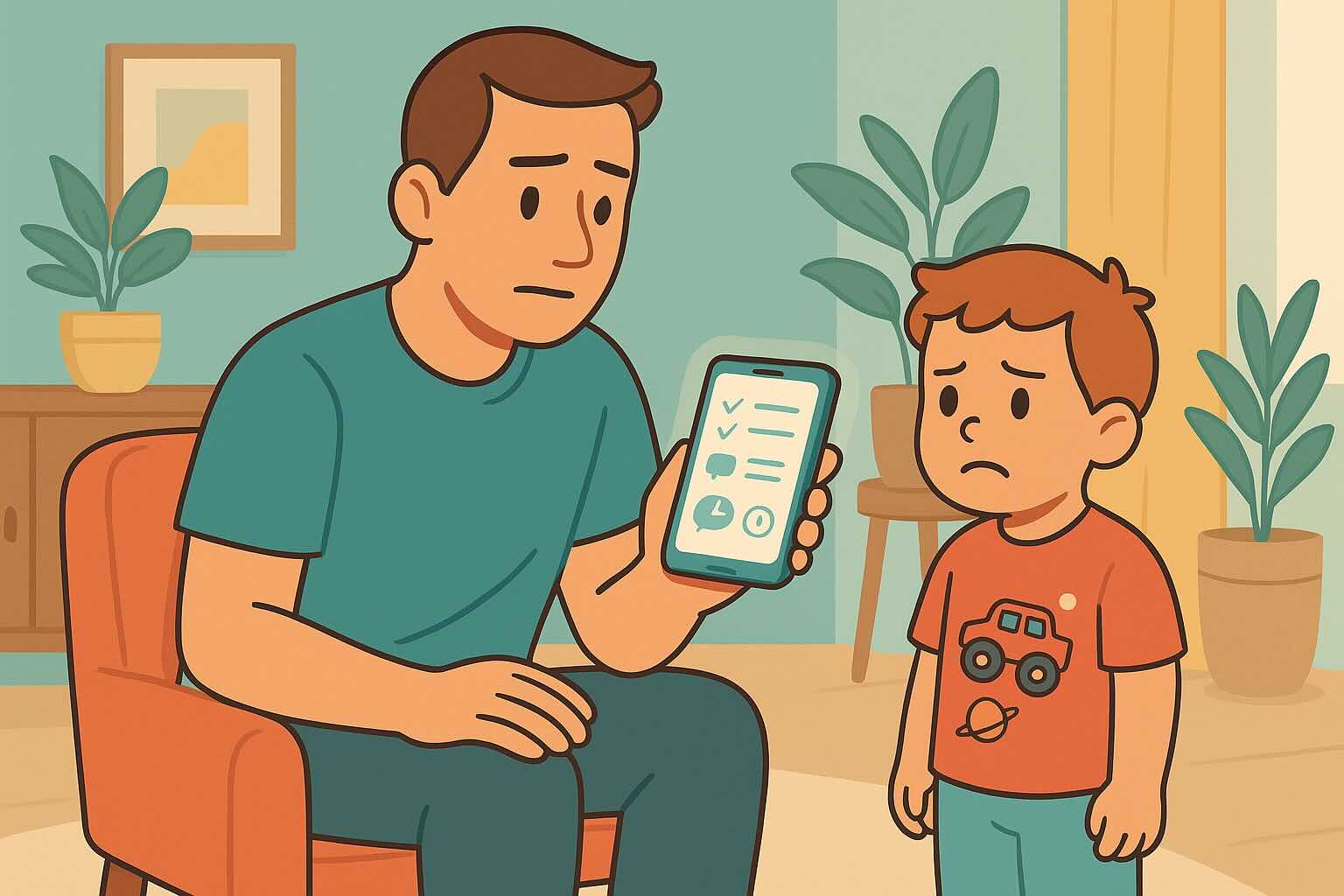
24/7 AI Parenting Assistant
Get instant, personalized advice with expert-curated parenting knowledge. Chat with your AI coach anytime, anywhere.
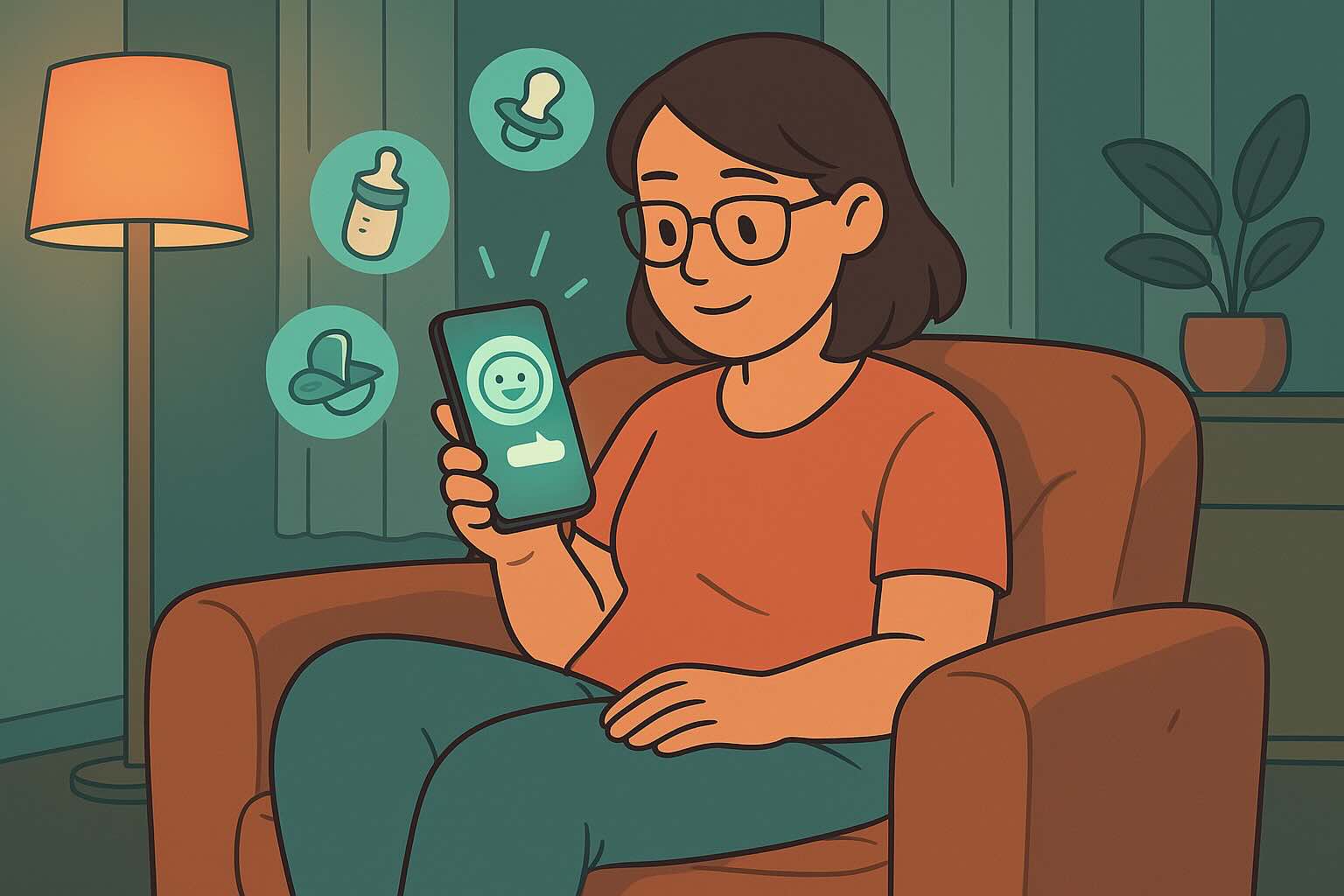
Boundary Setting Scripts
Set firm, loving boundaries without punishment using evidence-based scripts and strategies that build cooperation and respect.
Frequently Asked Questions
Need personalized support?
RootWise's AI coach can provide tailored strategies for your specific situation, available 24/7 when you need it most.
Learn More About AI Coaching →